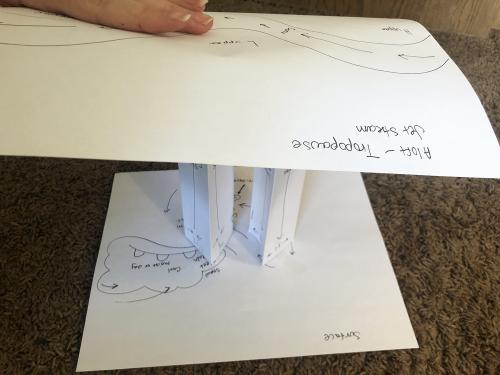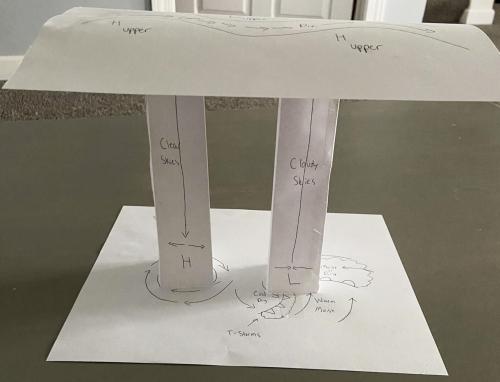WIU Professor Develops Unique Way to Study the Atmosphere Online
April 28, 2020

Model by senior Shelby Davin, an English major from Macomb.
[Download Print-Quality Image]
Editor's Note: This is the fifth in a series of feature stories about Western Illinois University faculty who are adapting and finding unique ways to reach their students during the COVID-19 Pandemic.
MACOMB, IL – Monitoring the interest of students during lecture sessions in a higher education classroom is one of the benefits of teaching courses in person. But as classes across the country, and at Western Illinois University, moved to alternative formats mid-semester, faculty have used unique ways to engage students.
WIU Earth, Atmospheric and Geographic Information Sciences Professor Redina Finch has found she's reaching out to students more than in a typical semester to make sure they understand the material and to keep them from getting bored or behind.
"Normally, I'm at the front of the class and can see that they're understanding the material," she said. "I'd thrown in an in-class activity to break things up. That's much harder when we moved online."
Finch's introductory classes study weather and climate, and she has created a series of videos to teach students about atmospheric circulation, then challenged them to recreate it in a three-dimensional model, using just paper and tape. She assigned them to photograph the construction process and submit them through the University's WesternOnline system.
"The three-dimensional nature of motion in the atmosphere is one of the hardest topics for students to understand," she said. "They had a lot of fun with this assignment."
Additionally, Finch sent her instructional videos to prospective meteorology students and said she got some "enthusiastic feedback." Finch has also created 15- to 20-minute video segments for class sessions, but said videos can get boring and hard to pay attention to.
"In addition, I send my students to various websites to do activities, see pictures, and look at videos of the weather in action - far more interesting than a talking head or a PowerPoint slide," she said.
WIU junior law enforcement and justice administration major Asia Billingslea said transitioning to online classes was difficult at first, but Finch made it easier.
"Professor Finch made YouTube videos and drawings to further explain the course material," she said. "Her number one priority was that her students understood everything we were taught about meteorology."
In the advanced meteorology classes, students now apply what they are learning to a weather case in place of exams.
"Ultimately the goal for a meteorology program is for students to be able to apply what they have learned to better understand and predict the weather," said Finch. "Analyzing an interesting weather event is a good way to prove you understand the material."
Students on both learning levels have stayed plugged in to the lessons and still show an interest in learning the material. Students who hadn't previously talked in class are now contributing too, which Finch calls a "good thing to come from teaching online."
While Finch's coursework could incorporate aspects of the pandemic, such as looking at a tornado outbreak or how staying at home has impacted air pollution around the world, she chose not to because students are already being inundated with information about the outbreak.
"They are living the drama," she said. "I don't want to add to that drama. Instead I made the class a little more Discovery Channel than I normally would to provide some escapist fun, while teaching them the information they need. I cut out a few videos on tornado damage because our own tornado season is right around the corner. Instead I focused on safety. I also ramped up the hurricane videos because I want them to see the power of Mother Nature is incredible."
In terms of adapting to the alternative format, Finch said it has allowed her to learn the Open Broadcaster Software, which is something she has wanted to do for a few years. She said if there were more time remaining in the semester, she would have students make video assignments as well.
"I think the students would enjoy making videos and I'd love to see what they come up with," she said. "That's for my next online class."
Finch said she's heard more good ideas for online programming from others than she can use this semester.
"I will likely be incorporating them for years to come," said Finch. "In my experience, educators are some of the most creative and giving people you can imagine."
For more information about the WIU Department of EAGIS, visit wiu.edu/eagis.
Posted By: Jodi Pospeschil (JK-Pospeschil@wiu.edu)
Office of University Communications & Marketing


Connect with us: